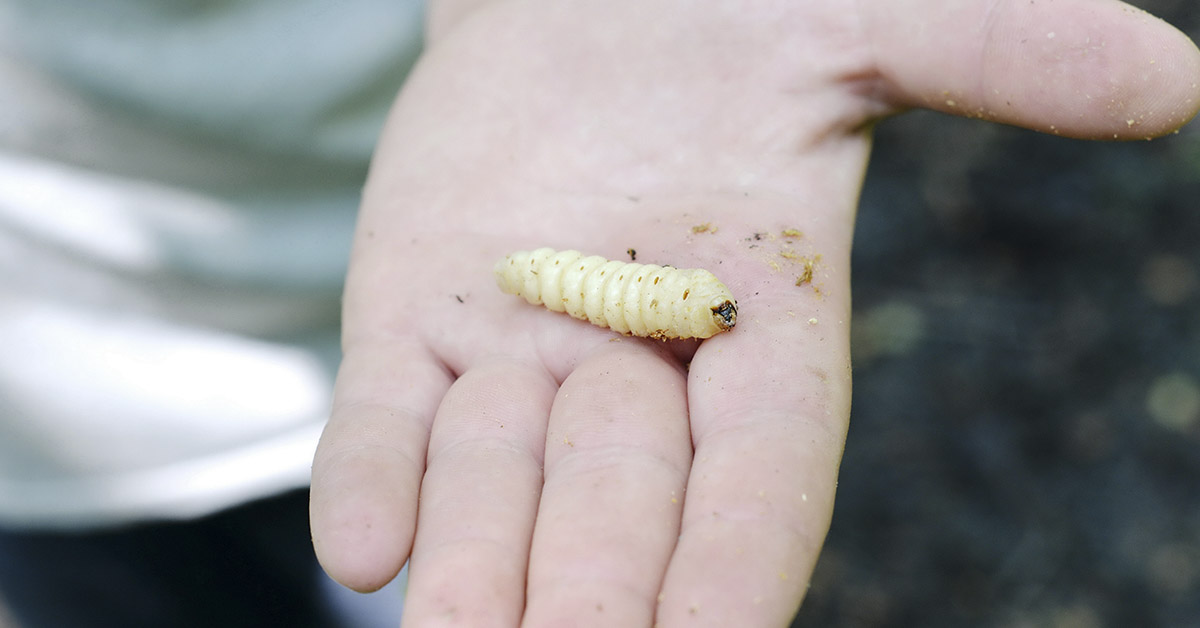We’ve all heard of the environmental impact and dangers of plastic. In recent years, some apparent concerns and health risks have come to light. Plastics break down in microscopic amounts and take hundreds of years to break down, their molecules never fully decomposing. This has had a negative impact on the environment, our water supply and our overall health.
Because global warming threatens our entire ecosystem, scientists have spent years researching alternatives for plastic use in households and solutions to the problems that plastics have caused. Through their research they may have stumbled upon a solution, that while creepy, may just be our saving grace. Their discovery is wax worms.
Origins of plastic.
Plastic is polymer chains defined as moldable solids made from organic and semi-organic matter. The invention of plastic was inspired by the desire to eliminate using ivory in certain household items. The inventor who first unveiled plastics was Alexander Parkes, in 1862, at an exhibition in London. This version, called Parkesine, is an organic material made of cellulose.
This material is malleable when heated so it could be molded, and retained its shape when cooled. The cost of materials was high and eventually the company filed for bankruptcy in the 1870’s. In 1907, Leo Baekeland, also credited with the invention of Velox photographic paper in 1893, created a version of plastic called Bakelite. This version was made from phenol and formaldehyde and was in liquid form prior to temperature change. To date there are 7 types of plastic that exist, including Styrofoam, PVC, and BPA.
They are all composed of differing materials and each one serves a specific function. When it was first invented it was a remarkable discovery that made every day living much easier and it seemed like the perfect solution.
What are Wax Worms?
Wax worms are caterpillar larvae that will eventually turn into moths, known as the wax moth. There are two kinds, a lesser and greater wax moth. The lesser wax moth, unsurprisingly, being the smaller of the two. Wax worms’ larvae are typically creamy white colored caterpillars with black feet and small black or brown heads. In the wild wax worms are referred to as nest parasites, living off of bee’s nests. Wax worms feed on cocoons and molted bee skin, as well as honeycomb.
Although the larvae do not feed on live bees, they require proteins found in brood comb to ensure healthy development. After the wax worms have eaten their share, the destroyed honeycomb will spill out or contaminate other stored honey. This can cause death to the bee larvae and spread diseases throughout the hive. Wax worms’ main purpose is to produce silk, from a gland that is located under their head.
The silk is then expelled through small organs called spinnerets. Wax worms can be kept in captivity for the purpose of feeding other animals such as reptiles or fish and are fed a diet that consists of honey, bran, and other cereal grains.
How Do Wax Worms Break Down Plastics?
A study published in the Nature Communications journal found that over 200 protein enzymes exist in the saliva of the wax worms, narrowing their research down to focus on the 2 that were proven to break down plastic molecules. The research was conducted after a scientist, who is also an amateur beekeeper, cleaned out his hive. It was infested with wax worm larvae and he found that they began to eat holes from a plastic bag. The enzymes found in their saliva can easily be replicated meaning they can be used on a large scale for the purpose of breaking polymer chains.
Breaking these chains down typically requires a lot of heat but scientists found that the enzymes work at normal temperatures. They also found that these enzymes are just effective in water and at a neutral PH level. According to researchers, “This study suggests insect saliva might [be] a depository of degrading enzymes which could revolutionize the bioremediation field.”[5]
Insects tend to elicit conflicting responses, with some people being totally enthralled, while others are completely disturbed. Insects have been coined with terms like “creepy”, “gross” or believe it or not, “cute”. No matter what your personal opinion may be, there is no question in the minds of scientists that every living organism plays an important role in our ecosystem. These funny looking little larvae known as wax worms are no exception.
Wax worms may be able to do some really incredible things for our environment. Scientists have stated this research is in its early stages but plan to continue studying wax worms and how their saliva may impact the environment in a way that is conducive to all life on Earth.
Sources
- “Wax worm saliva rapidly breaks down plastic bags, scientists discover.” The Guardian. Damian Carrington. October 4, 2022.
- “The 7 different types of plastic.” Plastics For Change. April 6, 2021.
- “History of plastic.” U.S. Plastic. Retrieved October 6, 2022.
- Who invented plastic?” Plastic Invention. Retrieved October 6, 2022.
- “Wax worm saliva and the enzymes therein are the key to polyethylene degradation by Galleria Mellonella.” Nature News. Sanluis-Verdes, A., Colomer-Vidal, P., Rodriguez-Ventura, F., Bello-Villarino, M., Spinola-Amilibia, M., Ruiz-Lopez, E., Illanes-Vicioso, R., Castroviejo, P., Aiese Cigliano, R., Montoya, M., Falabella, P., Pesquera, C., Gonzalez-Legarreta, L., Arias-Palomo, E., Solà, M., Torroba, T., Arias, C. F., & Bertocchini, F. October 4, 2022.
- “Waxworm.” Wikipedia. Retrieved October 6, 2022.

